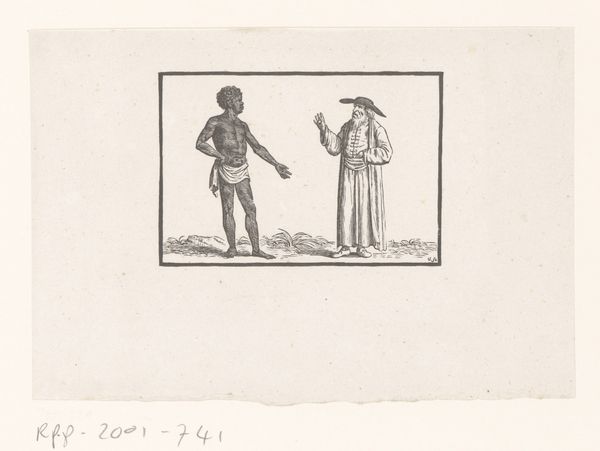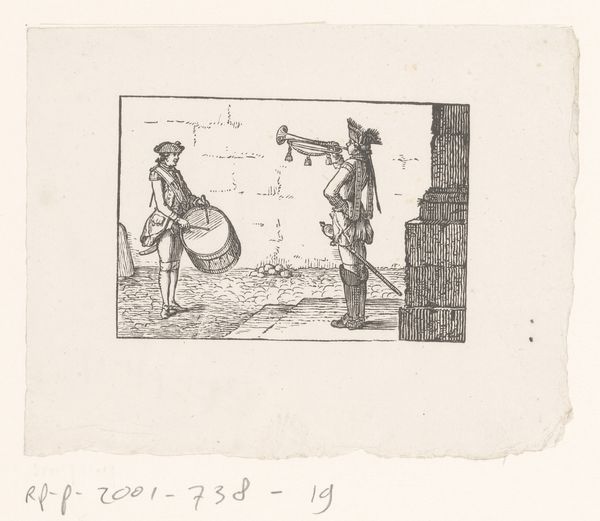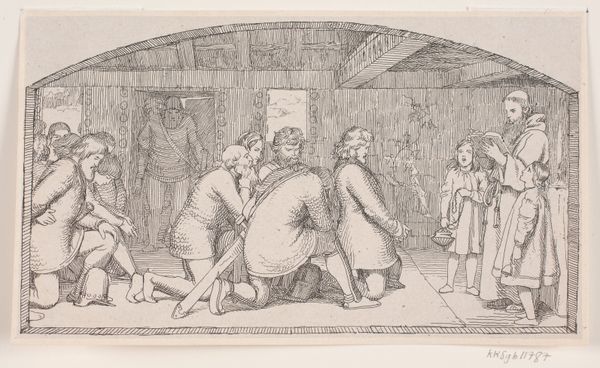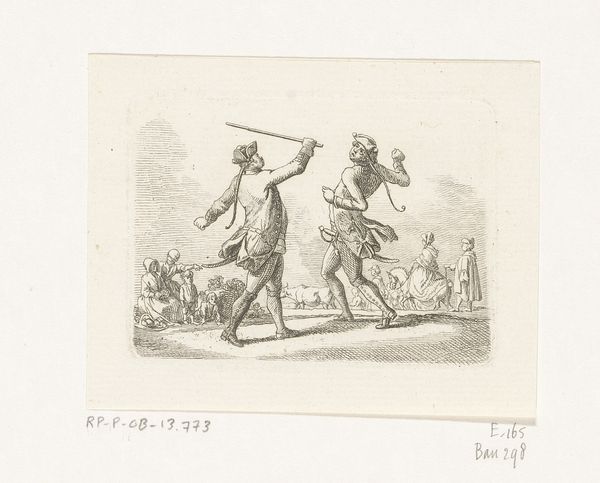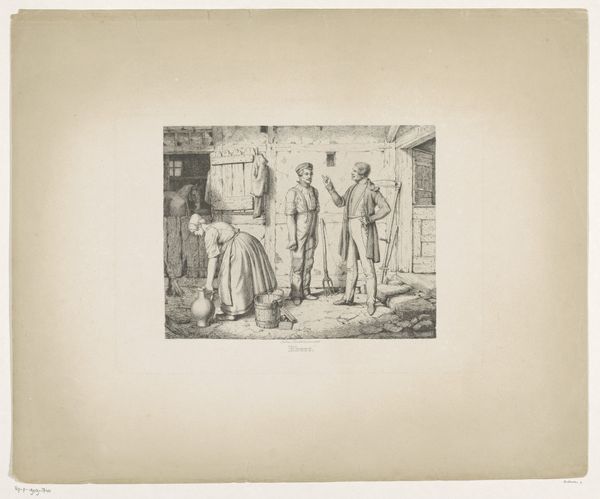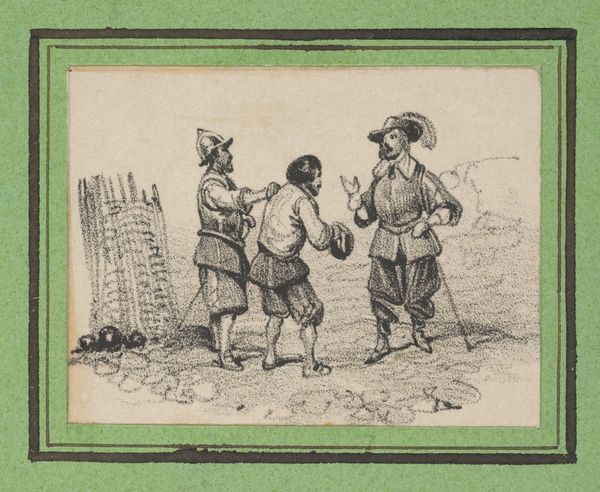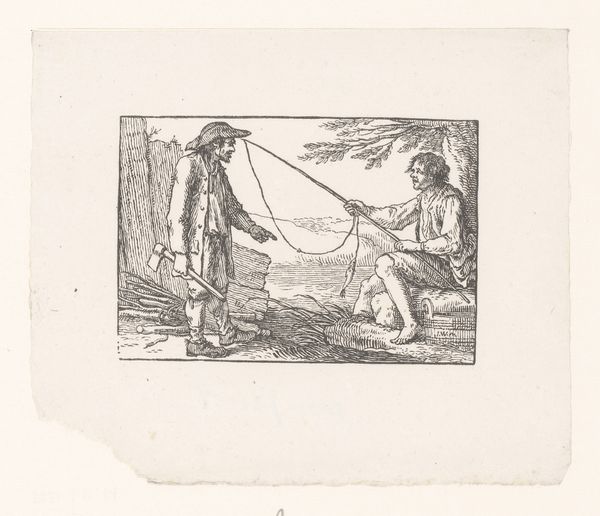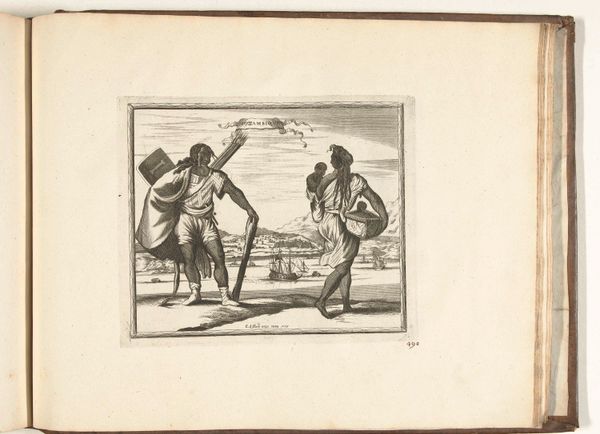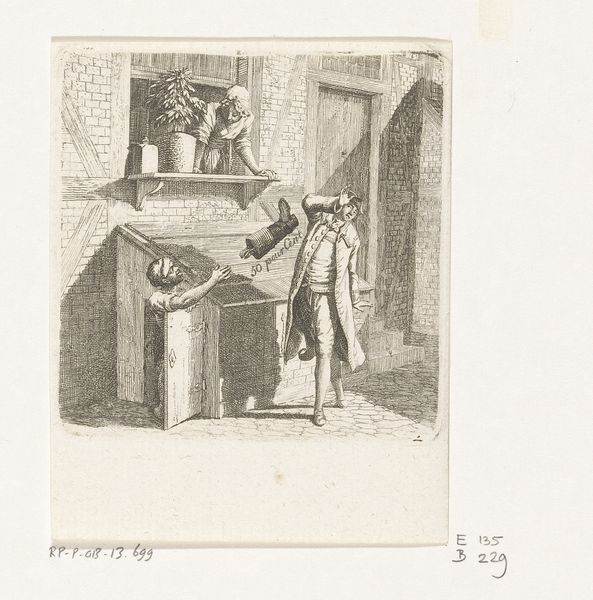
Dimensions: height 55 mm, width 80 mm
Copyright: Rijks Museum: Open Domain
Editor: We’re looking at “Bedelaar,” or “Beggar,” an engraving by Johann Friedrich Gottlieb Unger, likely made between 1763 and 1804. It depicts an older man begging for money, with a woman and child looking on. I’m struck by how raw the scene feels, almost like a snapshot of everyday life. What stands out to you? Curator: It’s fascinating to consider how Unger uses this genre scene to comment on the socio-economic realities of his time. Look closely at the lines: they don’t just depict figures, they carve out a social hierarchy. The beggar, seemingly older and worn, is juxtaposed against the implied security, or perhaps mere survival, of the standing woman and child. What stories of disenfranchisement and power dynamics do you think Unger is trying to unearth here? Editor: I guess I hadn’t thought of it in terms of power before. It seemed more like a simple observation. Is it right to see it as a criticism of the social structure, or could it just be a depiction of poverty? Curator: I think it is both. Unger isn’t merely documenting; he's framing a narrative. Consider the historical context. This work emerges during the Enlightenment, a period of questioning existing structures. Visual representations of poverty were not neutral acts. They were always charged with complex assumptions about agency and responsibility. Who does Unger invite us to sympathize with, and why? Editor: That's a really insightful way to look at it. So, beyond just seeing a beggar, we should be asking questions about the society that created this situation. Curator: Exactly. It is a reflection on the visibility, or rather the *invisibility*, of the marginalized and challenges us to reflect on those same dynamics still present in our own communities today. Editor: This gives me so much to think about, beyond just the surface of the artwork itself. Curator: Art can show us aspects of social inequalities from the past and ask important questions in the present day. I hope this artwork helps others find ways to start dialogues of their own.
Comments
No comments
Be the first to comment and join the conversation on the ultimate creative platform.
